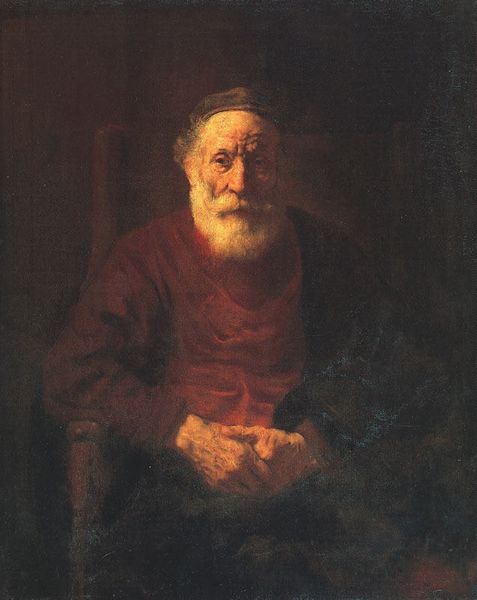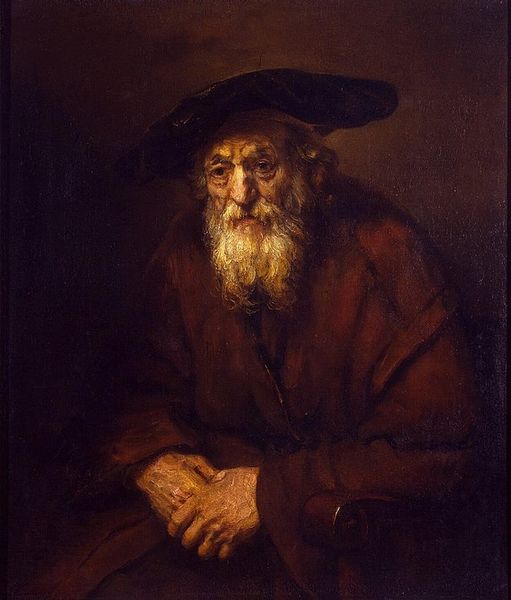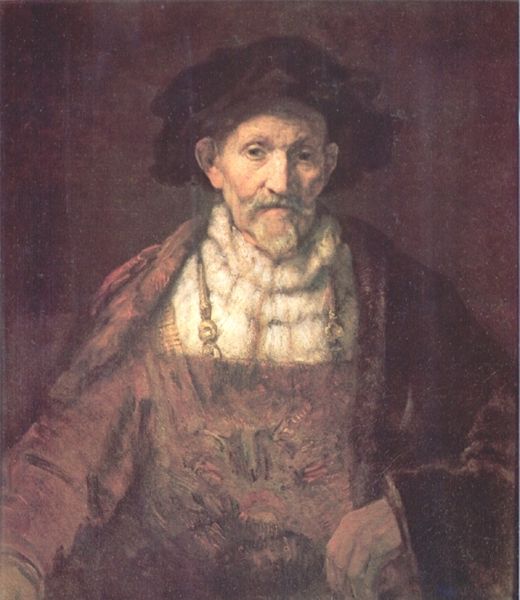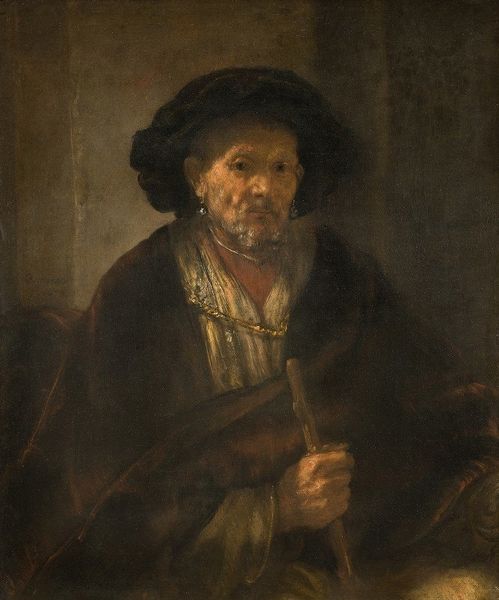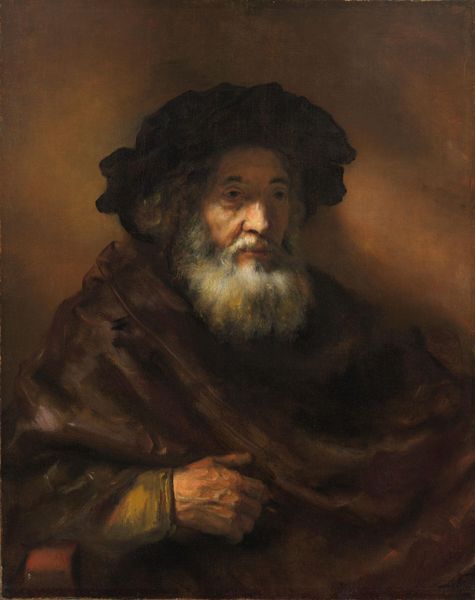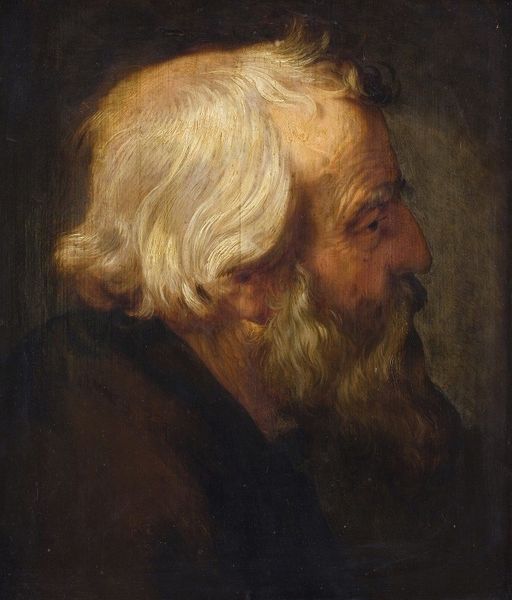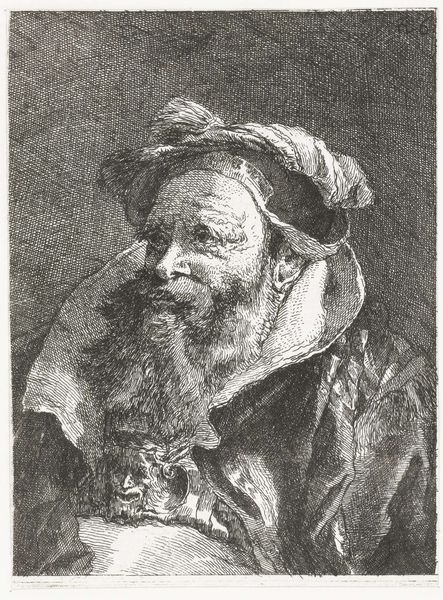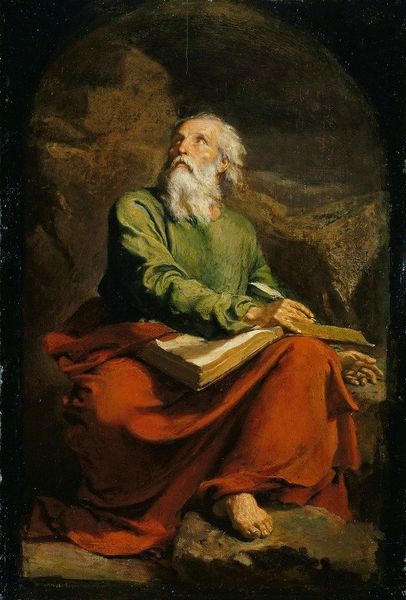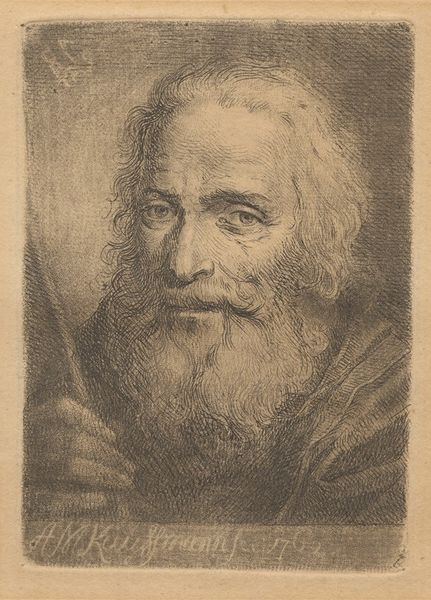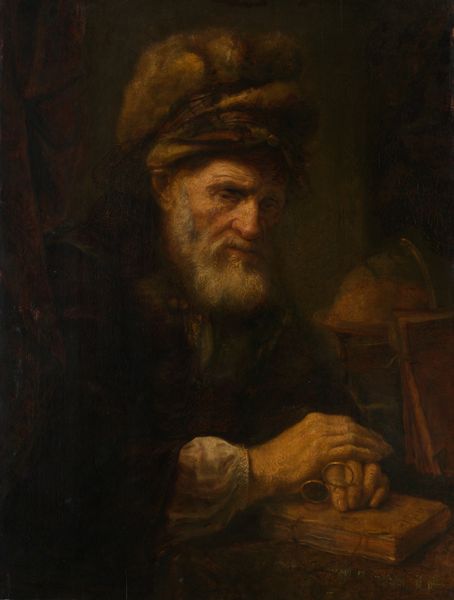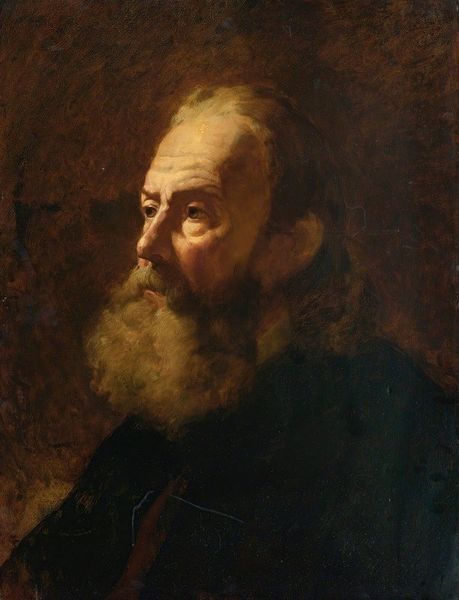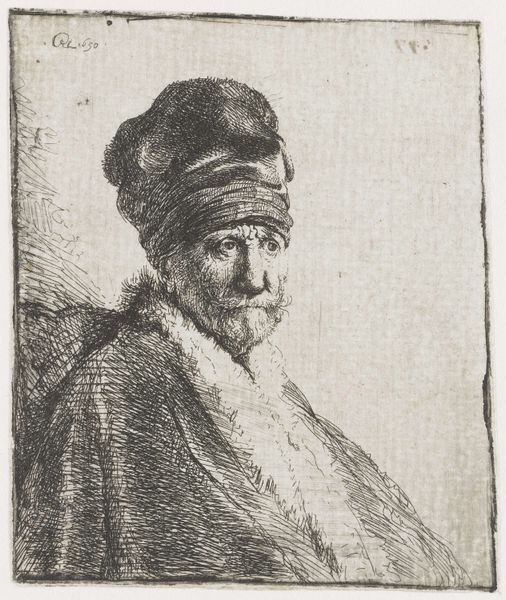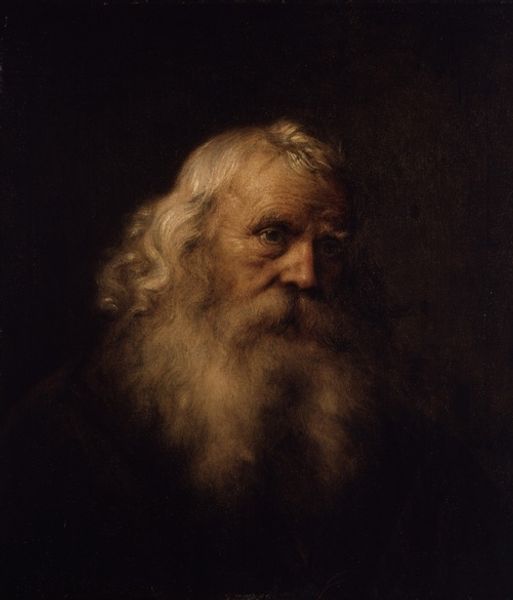
painting, oil-paint
#
portrait
#
baroque
#
painting
#
oil-paint
#
history-painting
#
realism
Dimensions: 102 x 86 cm
Copyright: Public domain
Curator: Here we have Rembrandt van Rijn’s 1632 oil on canvas, "Old Man Dressed as Saint Paul." It’s a study in character and, of course, dramatic lighting. Editor: My immediate feeling is one of subdued reverence. He seems caught between worlds, the palpable darkness giving way to the subtle light etching out the folds of skin on his hands. A powerful study of age, isn’t it? Curator: Indeed. It speaks to Rembrandt's deep understanding of the psychological weight carried by his subjects, doesn’t it? Note how he uses the symbolic attributes—the book representing Paul’s writings, his somber robe signifying piety. Editor: It does strike me, though, that he’s a far cry from the typical heroic Saint Paul. He appears humbled, perhaps weary. Is that deliberate, you think? A comment on the human aspect of sainthood? Curator: Precisely! Rembrandt frequently explored this very tension. Paul’s letters are, in their own way, a kind of dramatic personal narrative, which dovetails perfectly into Rembrandt’s Baroque fascination with history painting. Editor: You’ve nailed it! There’s almost a narrative brewing beneath the surface, I see now. I also feel this tension when viewing another of my favorite Rembrandt portraits, *The Jewish Bride*. Curator: Ah, a perfect analogy. Just as in The Jewish Bride, in "Old Man Dressed as Saint Paul", Rembrandt uses this technique to explore internal drama via facial expression, light and dark values, and composition, asking probing questions through painted symbolism. The muted palette emphasizes spiritual reflection. Editor: That’s beautifully said. Before this conversation, the artwork just appeared heavy. But now, understanding the layers of intention—the dialogue between symbolism, the artist’s emotional intention—it becomes almost transparent, shedding light in dark places, literally and figuratively! Curator: It’s about seeing through surface appearances, discovering universal struggles. Now it makes you look for yourself in those layers, yes? Editor: Exactly. Art becomes a mirror—a somber, but ultimately clarifying one. Thank you for guiding my seeing on this one.
Comments
No comments
Be the first to comment and join the conversation on the ultimate creative platform.
